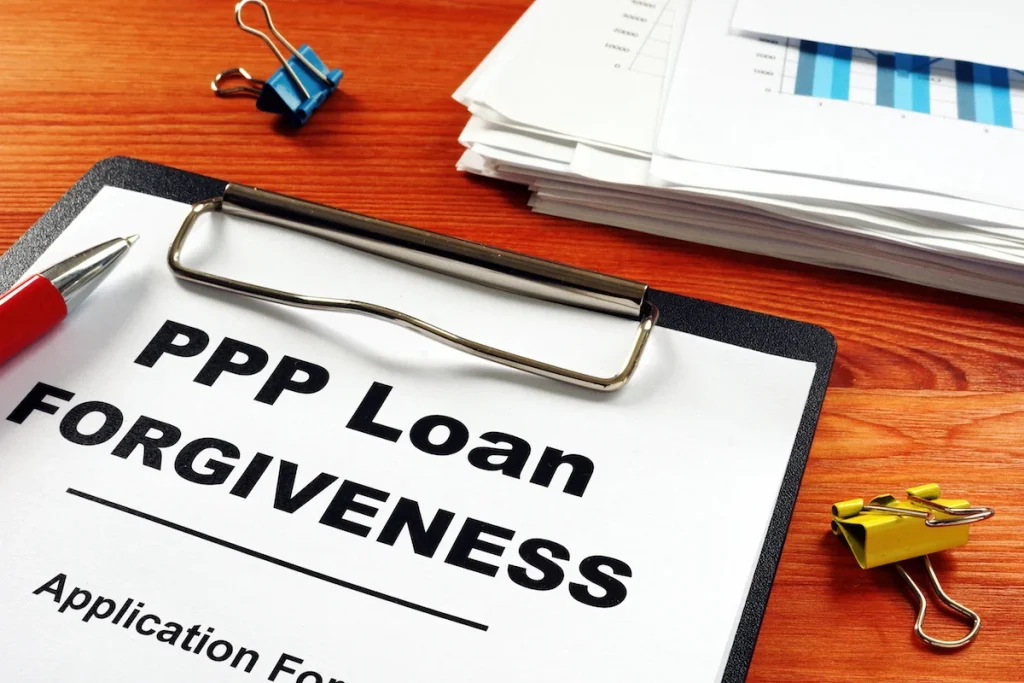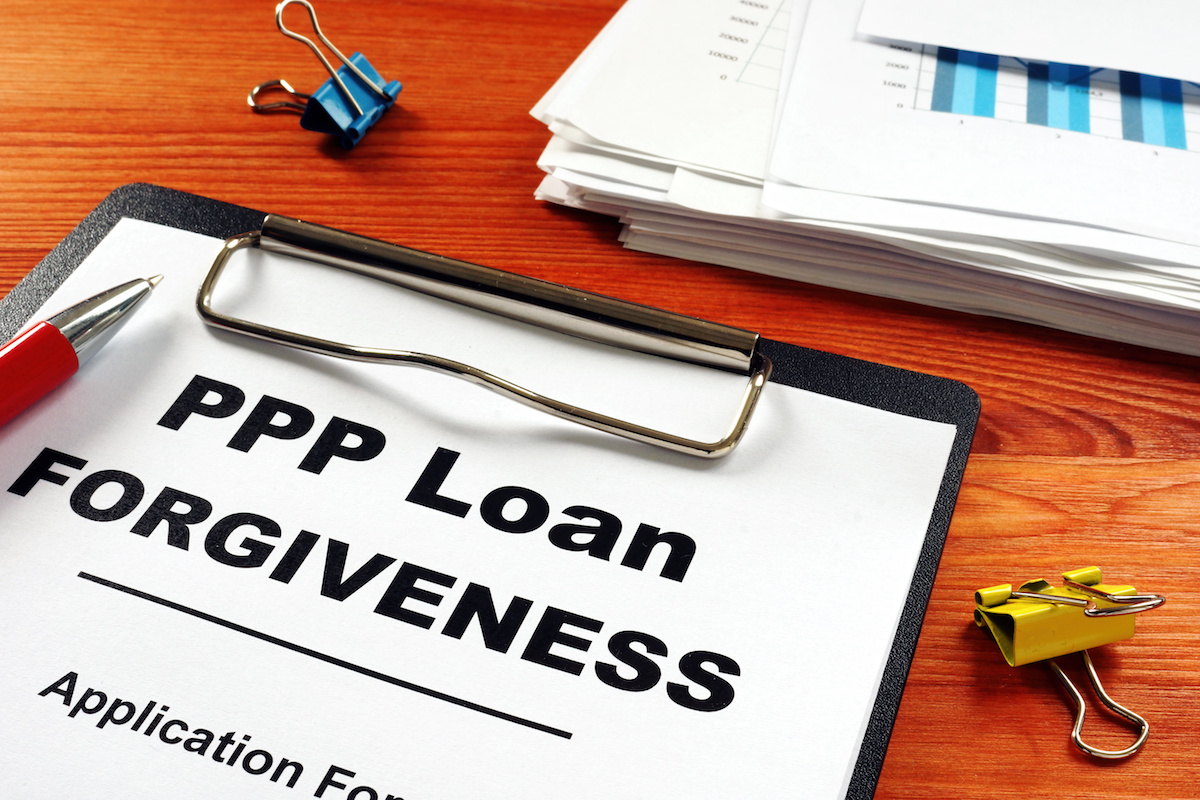


The Coronavirus Aid, Relief, and Economic Security Act (CARES Act) was passed by Congress and signed into law on March 27, 2020 to combat the economic hardship inflicted upon millions of Americans by the COVID-19 coronavirus pandemic. Containing a remarkable $2.2 trillion in assistance funds, the CARES Act launched a number of programs designed to address the needs of both individuals and businesses. For many healthcare practices, however, the most important measure contained in the law’s 800-plus pages was the $350 billion Paycheck Protection Program (PPP).
How PPP Loans Work
Designed primarily to support small businesses (like independent medical practices), the PPP measure consisted of loans issued by the Small Business Administration (SBA) and backed by the federal government to cover business expenditures like payroll and rent. If a business remained open throughout the COVID-19 crisis, it was eligible to receive a loan equal to a maximum of 250% of their average monthly payroll costs. The actual size of the loan, however, was determined by how long the business would be able to remain open between the dates of February 15 and June 30. Of course, the big headline for most businesses was the fact that PPP loans would be eligible for forgiveness if they met certain requirements and used the funds for specially-designated purposes.
To access this unprecedented program, however, businesses had to submit an application to a bank, typically whichever bank they had a preexisting relationship with. This caused a series of problems that both hindered the distribution of funds and left some businesses out in the cold by banks that favored more regular customers. More importantly, the program quickly exhausted its initial $350 billion within a few weeks. Congress shored the program up with another $310 billion, allowing banks to ultimately issue about 4.3 million PPP loans for a total of $500 billion.
PPP Loan Forgiveness Guidelines from the SBA
The details of PPP loan forgiveness were vaguely outlined in the CARES Act, but it wasn’t until May 15, 2020 that the SBA and the Department of the Treasury issued guidelines that provided much-needed clarification on how that process would work. These guidelines were further altered by Congress based on feedback from many business owners.
In order to request forgiveness for a PPP loan, borrowers need to fill out SBA Form 3508, Paycheck Protection Loan Forgiveness Application. The form contains several sections, but only the first two (the PPP Loan Forgiveness Calculation Form and PPP Schedule A) need to be submitted to the loan issuer. Typically, the issuer of the loan will be whatever bank your healthcare practice has worked with in the past.
Under the SBA guidelines, four business cost areas have been identified as being eligible for loan forgiveness:
- Payroll costs.
- Business mortgage interest payments.
- Business rent or lease payments.
- Business utility payments.
There are some additional caveats, however. The costs must have been incurred during the “Covered Period,” which is the 24-week period after the PPP loan was issued. While the guidelines originally stipulated that 75% of these funds must be used on payroll, Congress has reduced that amount to 60%. Borrowers also have five years to repay any unforgiven debt.
Payroll Costs
Any payroll costs “paid” or “incurred” during the Covered Period may be deducted. The distinction here is important because some costs may have been incurred before the loan was issued and paid after the PPP funds were received. There is a $15,385 cap on total forgivable cash compensation given to employees as well, which is based on a $100,000 salary prorated over the Covered Period. Any non-cash employee compensation, which usually consists of health insurance or retirement contributions, is exempted from the prorated limit.
Business Mortgage Interest Payments
If the borrower has made interest payments on mortgage obligations on real or personal property during the Covered Period, those payments are eligible for forgiveness provided the obligations were incurred before February 15, 2020.
Business Rent or Lease Payments
If the borrower has made rent or lease payments on real or personal property related to their business during the Covered Period, those payments are eligible for forgiveness provided the agreements were established before February 15, 2020.
Business Utility Payments
If the borrower has made utility payments for electricity, gas, water, transportation, telephone service, or internet access related to their business during the Covered Period, those payments are eligible for forgiveness provided the service agreements were established before February 15, 2020.
SBA Guidelines for Workforce Reduction
Again, it’s important to remember that non-payroll costs can only make up a maximum of 40% of the forgivable loan total. That’s because one of the primary objectives of the CARES Act was to help businesses keep their full-time employees on the payroll rather than laying them off when the COVID-19 crisis impacted the economy. As part of that goal, businesses that received a PPP loan must maintain their workforce for the duration of the Covered Period if they want to qualify for loan forgiveness. The SBA uses a calculation known as full-time equivalency (FTE) to evaluate whether or not borrowers have met this requirement.
There are two ways for a borrower to calculate FTE:
- Divide the average number of hours paid per week to each employee by 40, then round that total to the nearest tenth.
- Assign every employee who works 40 or more hours per week a value of 1.0 and assign employees who work less than 40 hours a value of 0.5.
After the calculation is complete, employers must compare their average FTE during the Covered Period to the average FTE from a previous reference period. If the FTE from the Covered Period is lower, the SBA will take that as an indication that the borrower reduced their workforce and may not forgive the entire PPP loan. Furthermore, the loan forgiveness amount may be reduced if employee compensation was reduced by 25% or more during the Covered Period.
Fortunately, the SBA guidelines provide some exceptions and flexibility on this requirement. If FTE reductions occurred for any of the following reasons, the loan may still be eligible for forgiveness:
- The borrower made good faith attempts to rehire employees, but was unsuccessful.
- Employees were fired for cause.
- Employees voluntarily resigned.
- Employees voluntarily requested and received a reduction in hours.
Additionally, the SBA outlined a “Safe Harbor” provision to exempt some borrowers from FTE requirements. If a borrower was forced to reduce FTE levels between February 15 and April 26, they can avoid penalties if they restore their FTE levels to the February 15 level by December 31 at the latest.
PPP Loans and Your Healthcare Practice
The distribution of PPP loans through the private banking system created problems for small businesses that were forced to compete with larger companies with more established banking relationships. In many cases, small medical practices found themselves losing out to bigger hospitals and healthcare networks. Even worse, some practices that did manage to obtain a PPP loan actually returned the funds due to concerns over how the SBA would apply forgiveness guidelines. Now that those guidelines have been issued, however, healthcare providers finally have some clarity about how they should move forward as they take steps to reopen their medical practices.
As you prepare to resume treating patients or bringing your staff back to work as states ease COVID-19 restrictions, NCG Medical is here to help you handle the burdensome challenge of billing and coding for insurance reimbursement claims. Our experienced team can streamline your revenue cycle management and put the foundation in place for a more efficient and profitable practice. To learn more about how we can get your healthcare practice off to a brand new start, talk to one of our medical billing experts today!
{{cta('1f0f81a0-da21-469b-9c74-5fbcf7357a51','justifycenter')}}



